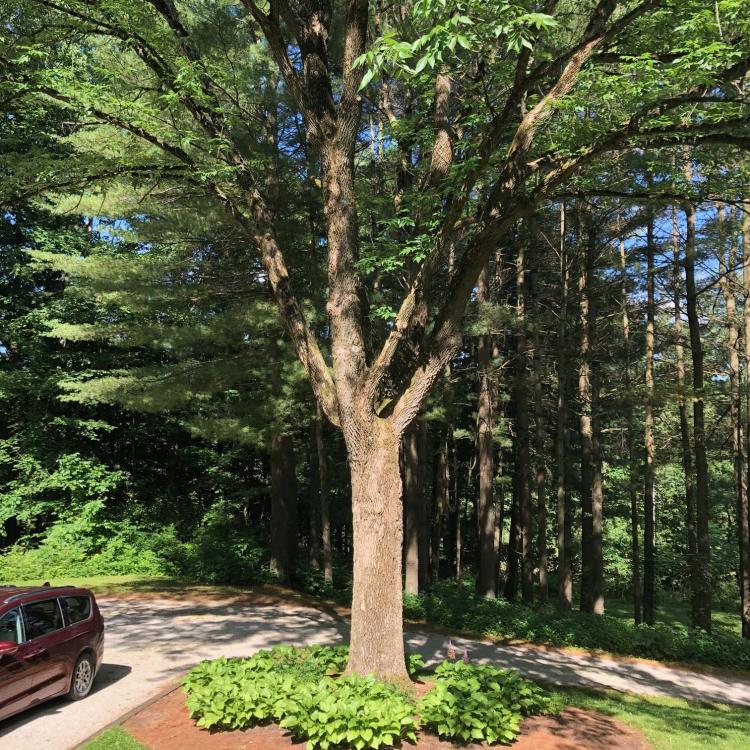This large ash tree on our outdoor editor Chip Gross's property in north-central Ohio only survives because it is chemically treated regularly by a tree service company to protect it from emerald ash borer.
Clint Walker, Consolidated Cooperative
Q. Hi Chip: On my farm, I have five mature ash trees located on a fence line along a county road. I just noticed that three of the ash trees under and near an overhead power line are alive and well, and the two farther away are long since dead. I have a monitor to hang on the electric fence immediately under the power line, but I could not use it there because the electrical field generated by the power line indicated that the fence was electrified when it wasn’t. Could it be that emerald ash borers are repelled by that same electrical field, which is why three of the ash trees are still alive?
A. I’ve never heard of such a thing, Clint, but your theory sounds plausible so I referred the question to the Ohio Division of Forestry and received the following answer from Tom Macy, their Forest Health Program Manager:
“I’m not sure there is anything to that, as I know that emerald ash borer has killed lots of ash trees in very close proximity to power lines. That’s why utility companies are so concerned about ash growing near power lines, and have tried to be as proactive as possible in removing any ash that are growing near them. But if Clint’s trees are surviving and still appear healthy, I would urge him to report those trees using the free TreeSnap smartphone app. It’s the best way to report survivor trees so that researchers can follow up and try to determine if the trees have true resistance/tolerance to the pest and could be helpful in a pest-resistance breeding program.”
On a personal note, Clint, I’m very familiar with emerald ash borer and the devastating effect those invasive insects can have on woodlands. My wife and I own a 12-acre woodlot in Morrow County that was invaded by emerald ash borer about a decade ago. I estimated that, at the time, 20 percent of our woods was ash trees and the insects killed every last one. The only ash tree on our property that has survived is not in the woods but in our front yard, and it only survives because we have it chemically treated regularly by a local tree service. The treatment is not inexpensive, but we don’t want to lose the large tree, as it is a major part of our landscaping.
Emerald ash borer was first detected in Ohio just twenty years ago, in 2003, and has since spread across the state, essentially wiping out the vast majority of ash trees. It’s a sad commentary on what invasive insects can do and how quickly they can do it.









